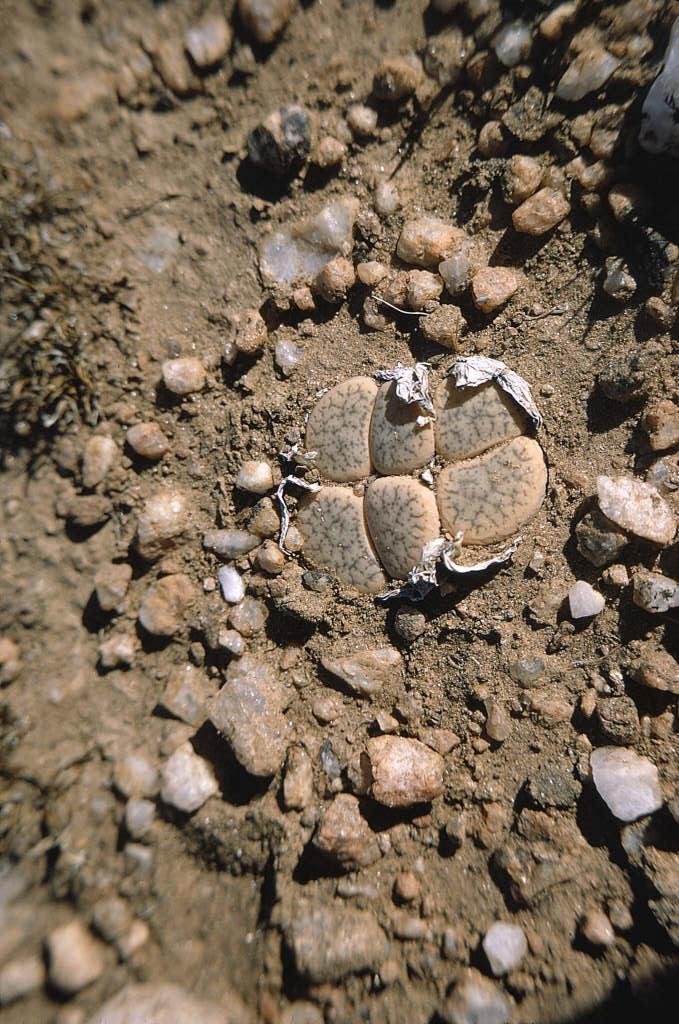Lithops pseudotruncatella
truncate living stone
A clump-forming succulent perennial with paired pale buff leaves veined and mottled with olive-brown on the tips. Yellow flowers 4cm across open in late summer and autumn

Buy this plant
Size
Ultimate height
Up to 10cmTime to ultimate height
5–10 yearsUltimate spread
0–0.1 metreGrowing conditions
Moisture
Well–drainedpH
Acid, Alkaline, NeutralColour & scent
| Stem | Flower | Foliage | Fruit | |
| Spring | Brown | |||
|---|---|---|---|---|
| Summer | Yellow | Brown | ||
| Autumn | Yellow | Brown | ||
| Winter | Brown |
Position
- Full sun
Aspect
East–facing or South–facing or North–facing
Exposure
Sheltered Hardiness
H2Botanical details
- Family
- Aizoaceae
- Native to GB / Ireland
- No
- Foliage
- Evergreen
- Habit
- Clump forming
- Genus
Lithops are nearly stemless, succulent perennials forming bodies composed of a pair of very fleshy leaves, the flattish tips bearing translucent dots or patches; daisy-like flowers emerge from the fissure between the leaves
- Name status
Unresolved
- Plant range
- S.W.Africa- Namibia
How to grow
Cultivation
Grow under glass in a standard cactus compost with added leaf mould, in bright, filtered light, with good ventilation. When in growth water moderately and feed every two or three weeks with a balanced liquid feed. Keep almost dry in the winter
Propagation
Propagate by seed sown at 19 - 21°C in early spring or by offsets
Suggested planting locations and garden types
- Patio and container plants
Pruning
No pruning required
Pests
Diseases
Generally disease-free
Get involved
The Royal Horticultural Society is the UK’s leading gardening charity. We aim to enrich everyone’s life through plants, and make the UK a greener and more beautiful place.